Julia Klein
- 2000
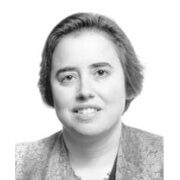
Fellowship Title:
- History in Play: Contested Museums and Memorials
Fellowship Year:
- 2000
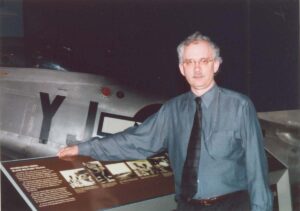
Tremors from the Enola Gay Controversy: An Argument for the Postmodern Museum
WASHINGTON — Sitting in his book-lined office at the Smithsonian Institution’s National Air and Space Museum, Michael Neufeld talks bitterly about his role as the much-maligned curator of the most infamous museum exhibition never mounted. Michael Neufeld, curator of the Enola Gay exhibition. (Photo by Julia M. Klein) “A lot of people in this country don’t want the decision to drop the bomb debated,” he said. “They feel you must obviously be an anti-American evil person even to debate the legitimacy of dropping the bomb…. The fact that there had been 30 years of historiographic debate and development…was irrelevant…. As far as they were concerned, there was a gospel truth: Dropping the bomb prevented the invasion of Japan and ended the war. End of discussion.” Not so, says John Correll, editor of Air Force Magazine and arguably the person most responsible for stirring opposition to the museum’s planned exhibition on the Enola Gay. In his view, the National Air and Space Museum erred by trying to present a slanted account of the end of World War
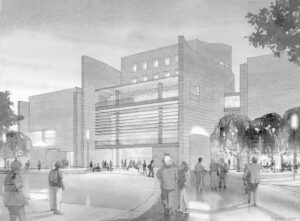
A Museum In Black and White
In the mythology of the Underground Railroad, the Ohio River has a sacramental status. Crossing it transformed slaves into free men and women. The alchemy was imperfect, to be sure: Under federal law, slaves in the North remained property and could be recaptured. Still, reaching the free state of Ohio from Kentucky was a critical step in a pilgrimage that led to Canada and safety. Now, this voyage, undertaken by thousands of slaves before the Civil War, is being commemorated in a landmark museum on the Cincinnati waterfront. Architects’ concept sketch of the Freedom Center entrance at night. Slated to open in 2004, the $110 million National Underground Railroad Freedom Center is a grand undertaking that grew out of a modest notion. The local chapter of the National Conference for Community and Justice (formerly the National Conference of Christians and Jews) proposed the center in 1994 as a way of marking its 50th anniversary and its mission of fostering cooperation across racial, religious and ethnic lines. The center’s dual identity is embodied in its name.
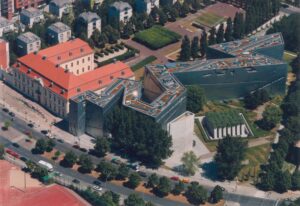
The Jewish Museum in Berlin – “Not a Guilt Trip”
BERLIN – Like a streak of lightning or an unraveling Star of David, the Jewish Museum Berlin zigzags through this city’s Kreuzberg section, just steps away from graffiti-covered storefronts and boxy, high-rise public housing. Clad in zinc, its façade broken by irregular slashes of glass, it gleams like a spaceship in an alien landscape. Aerial view of Jewish Museum Berlin Photo courtesy of Jewish Museum Berlin Thanks in part to its wondrous incongruity, Daniel Libeskind’s award-winning building has become one of the new German capital’s chief tourist magnets, attracting hundreds of thousands of visitors. One day, while a policeman watched for terrorists outside the empty museum, a few tourists wandered the grounds, snapping pictures. Others explored the few corridors still open while workmen completed upgrades to the building’s infrastructure. A view of the zinc-clad façade of Daniel Libeskind’s award-winning building, the Jewish Museum Berlin. Photo courtesy of Jewish Museum Berlin Conceived in the 1970s and originally intended as a division within the Berlin City Museum, the $87 million Jewish Museum was set to open the week of
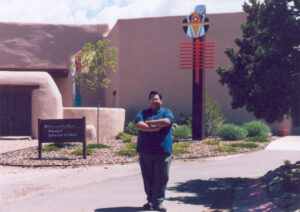
Native Americans in Museums: Lost in Translation?
SUITLAND, Md. — The George family traveled to the nation’s capital from their northern California reservation this July with a clear agenda: To inform America about the Hupas’ continuing battle to preserve their land and culture against environmental threats. “America has been educated from a colonial, oppressive perspective, and then [Walt] Disney has come along and colored who we are,” said Laura Lee George, an assistant school superintendent whose husband, Merv George Sr., is the tribe’s ceremonial leader. George said she hoped the Smithsonian Institution’s National Museum of the American Indian (NMAI) – which footed the bill for the trip—would help alter those images. Tony Chavarria, a Santa Clara Pueblo, is curator of ceramics at the Museum of Indian Arts and Culture in Santa Fe, New Mexico. Photo by Julia Klein. Emil Her Many Horses, the Oglala Sioux curator of the museum’s “Our Universes” exhibition, and Bruce Bernstein, the museum’s assistant director for cultural resources, had their own agenda for the George family. Aided by Hupa activist and scholar David Risling, the Georges were to select
